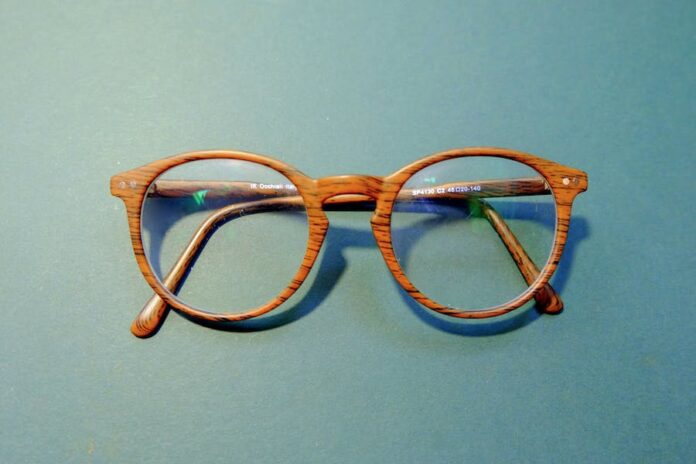Prism glasses, often referred to as prism correction glasses, are eyeglasses designed to address a specific vision challenge known as double vision or diplopia. Double vision occurs when a person sees two images of a single object, making it difficult to focus on and interpret the world around them. Prism glasses are a potential solution for individuals who experience this visual condition. In this article, we will explore what prism glasses are, who might need them, how they work, their appearance, and some common questions related to their usage.
Understanding Prism Glasses
Prism glasses are a specialized type of eyewear designed to assist people with double vision. This condition can be caused by various factors, including eye misalignment, nerve damage, or muscle weakness. When our eyes don’t work together as a team, we may perceive two slightly offset images instead of a single, unified one. Prism glasses come to the rescue by helping to align these two images and reduce the confusion caused by double vision.
How Prism Glasses Work
Prism glasses utilize specially crafted prism lenses that gently redirect the path of light entering the eyes. These prisms bend the light so that it reaches the correct spot on the retina, even if the two eyes are not perfectly aligned. This alignment of images is vital for our brain to create a single, coherent picture of the world around us.
It’s important to note that prism glasses do not address issues related to nearsightedness or farsightedness; they don’t correct refractive errors like traditional prescription glasses. Instead, they “trick” the eyes into perceiving objects as if they are correctly aligned, which significantly improves vision for those experiencing double vision.
Who Might Benefit from Prism Glasses
Prism glasses can be a valuable solution for individuals dealing with double vision. Here’s a closer look at the people who may benefit from these specialized eyeglasses:
- Strabismus Patients: Strabismus is a condition where the eyes are misaligned, pointing in different directions. Prism glasses can help these individuals see a single, unified image.
- Post-Injury or Surgery: People who have experienced head injuries or undergone eye surgery, and subsequently suffer from double vision, may find relief through prism glasses.
- Neurological Conditions: Conditions like strokes or diabetes can lead to nerve damage or muscle weakness, which can result in double vision. Prism glasses can help correct this issue.
- Rehabilitation: Some individuals may use prism glasses during vision rehabilitation to retrain their eyes and improve alignment.
How Prism Glasses Look
In terms of appearance, prism glasses closely resemble regular prescription eyeglasses. However, they may have one lens that appears thicker than the other. This difference in lens thickness is a result of the prism correction. If you find this aspect of prism glasses aesthetically challenging, you can opt for frames that have thicker sides to conceal the varying lens thickness.
The prescription for prism glasses is tailored to the type of double vision you are experiencing. Whether it’s horizontal, vertical, or oblique double vision, the eyeglasses will be customized to address your specific needs.
Conclusion
Double vision can be disruptive and, in some places, even restricts activities such as driving. Prism glasses serve as a non-surgical solution for individuals dealing with this issue. They work by realigning the images seen by each eye, enabling the brain to merge them into a single, unified image. This not only eliminates double vision but can also improve overall quality of life.
If you or someone you know is experiencing double vision, it is crucial to consult an eye specialist for a thorough evaluation. A proper diagnosis and prescription, whether in the form of prism glasses or another solution, can make a significant difference in your visual comfort and clarity. Remember, your eye health and vision are invaluable, and seeking the right guidance can lead to a brighter, more focused world.
FAQ
To shed further light on the topic, let’s address some frequently asked questions about prism glasses:
How long does it take for prism glasses to work?
Adapting to prism lenses typically takes a few days for most individuals. However, in some cases, it may take up to a couple of weeks for complete adjustment. If you continue to experience issues beyond this period, consult your eye specialist promptly.
Is it necessary to wear prism glasses all the time?
It’s not compulsory to wear prism glasses constantly, but if they enhance your vision and reduce discomfort associated with double vision, it is advisable to wear them regularly. While there may be initial discomfort, it often subsides with time.
Can individuals with prism correction wear contact lenses?
The suitability of contact lenses with prism correction depends on an eye examination by an optometrist or eye-care practitioner. They can determine if your eyes are suitable for contact lenses with prism correction.
Can prism glasses cause side effects?
Yes, there is a possibility of experiencing side effects when wearing prism glasses. Some individuals may still encounter double vision, irritation, or headaches. These problems can be attributed to an outdated prescription or misaligned lenses. It’s essential to ensure your prescription is up to date while using prism glasses to avoid potential vision-related issues.
What if I have difficulty adjusting to prism glasses?
Adapting to prism glasses may take time, and during this period, you might experience side effects like headaches, double vision, nausea, or spatial disorientation. If you encounter these symptoms, reach out to your eye doctor for possible adjustments, including frame refitting or a new prescription.






















